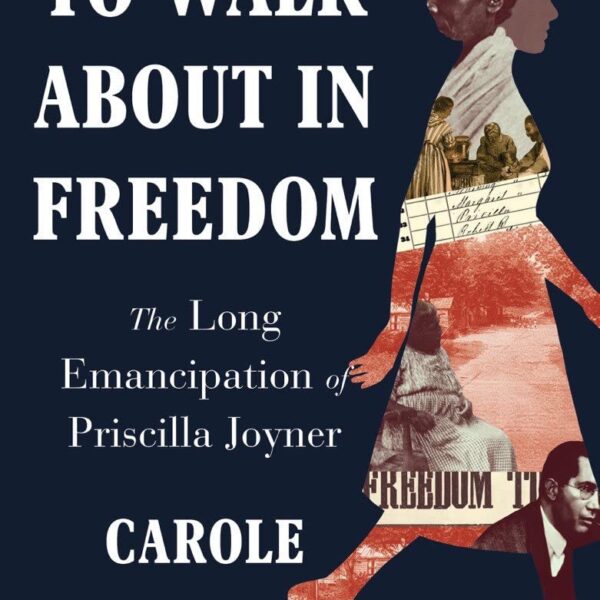Stève Sainlaude, Associate Professor of History at the University of Paris IV Sorbonne, has authored two important French-language studies about France and the U.S. Civil War. Thanks to UNC Press and translator Jessica Edwards, his important work is now available for anyone interested in this topic who does not read French. As Don H. Doyle notes in his perceptive foreword, Sainlaude is not the first scholar to examine French diplomacy during this period; however, none of the previous historians “have revealed so effectively as Stève Sainlaude just how French foreign policy was made. He moves beyond the diplomatic correspondence between the Quai d’Orsay (the French Ministry of Foreign Affairs) and the French embassy in Washington to pay closer attention to French consular dispatches” (xiii). In sum, Sainlaude employs often-neglected sources to help formulate new answers to old questions. In so doing, revises a great deal of what historians thought they knew about French diplomacy during this critical period in American history.
Sainlaude divides the volume into three parts, each consisting of three chapters. Part One examines the often-contradictory attitudes among the French toward the U.S. Civil War. At the outset of the conflict, European powers faced thorny questions about neutrality, and “it was urgent to define a legal framework because both the blockade declared by the North and any naval operations in which the two enemies might clash were liable to affect the U.S. market” (14). He argues that France strove to respect the declaration of neutrality, and that this translated into a detrimental position for the rebels. This is a convincing argument. For one, the imperial government maintained diplomatic relations with the Lincoln administration, but only unofficial relations with the rebels. In addition, although France recognized the belligerent rights of the rebels, they did so to protect neutrals from aggression at sea. Moreover, they did not allow rebel privateers to sell prizes, which deprived the rebels of needed revenue.
Napoléon III has long been (correctly) understood as a proponent of and cheerleader for the rebels. He spent time in the U.S. in 1837, but the country left the future emperor cold. For many reasons, he attempted, on several occasions, to mediate between the Union and the rebels. These frequent mediation attempts gave Union authorities in Washington the idea that the emperor was a rebel ally. In 1862 and 1863, he “chose a moment when the South was on a winning streak to break with neutrality. He anticipated victory for the Confederates and wanted to support them with a diplomatic decision” (51). One of the most fascinating parts of this book is how Sainlaude complicates long-accepted wisdom about French diplomacy. He agrees that the rebels found a champion in Napoléon III, but also illustrates the sharp disagreements between the emperor and his foreign ministers, Edouard Thouvenel and Edouard Drouyn de Lhuys. Their resolute opposition to many of the emperor’s schemes “regularly thwarted his plans” (59). In essence, a civil war existed in the French imperial government about the U.S. Civil War. Furthermore, the foreign ministers, the adults in the room, often saved the emperor from his worst impulses or mitigated his frequent lapses of judgment.
Sainlaude also objects to an old argument that France could not intervene because Great Britain did not want to depart from their policy of neutrality and lists several persuasive objections. For one, Napoléon III wanted to return France to the country’s former standing and glory. Subservience to Great Britain would thus have been unthinkable. In addition, the French regularly flouted the British position. Finally, despite efforts to harmonize the foreign policies of the two countries, they were, after all, ancient enemies and old quarrels continued to resurface and roil the waters. Sainlaude argues that the U.S. Civil War was “not a priority of the diplomatic relations between London and Paris” and that “the foreign ministries had more pressing concerns in the European theater” (71). Europeans undoubtedly faced important issues, but this minimization of the U.S. Civil War does not seem to agree with some of the other analysis in this volume. In any case, he asserts that the Mexican invasion dealt the most damage to relations between London and Paris and relations “became even more strained when it appeared that the British were sending arms to Juárez” (73). For France’s foreign ministers, “the refusal to recognize the Confederacy was inspired not by England’s position but by an objective evaluation of the benefit that France might draw from secession” (75). France was hardly a junior partner to Britain.
Part Two explores France’s views of the rebels. Southern propagandists “hoped to rally to cream of French society to their cause” (79). They had some success—the rebels certainly won the heart of Napoléon III—but they also had to “reckon with resolute opponents and the facts on the ground” (79). In order to attract French sympathy, propagandists played up connections to France. Louisiana became an important reference point and the friends of the rebels likened their struggles to those of the oppressed nations in Europe. Sainlaude’s conclusions are surprising. As he contends, some French people bought what the propagandists were selling. However, “it would seem that the average French person showed little interest in the Civil War” (86). Furthermore, while the rebels won the emperor’s support, those who implemented foreign policy tended to be hostile to the South. In other words, the rebels hit the wrong target. French consuls also kept the imperial government informed about the state of affairs on the ground, particularly the cruel treatment of the French residents of rebeldom. Perhaps, Sainlaude sensibly contends, historians have spent too much time focusing on the support for the rebels in the imperial government. After all, “sympathy rarely inspires foreign policy” (98).
Sainlaude also offers an excellent discussion of slavery and French diplomacy. The informed public saw slavery as an “anachronistic relic,” an “absurdity” and “a morally disgraceful practice” (99). Despite this revulsion, slavery did not really tarnish the rebel image and was, at best, a secondary consideration for French leaders, a position very different from British policymakers. Sainlaude also examines another important question: if the destruction of the U.S. represented an opportunity for France, why did Paris not seek to encourage division? He answers that the French had their doubts about the South’s support for the Mexican invasion. France also worried about the long, ugly history of expansion and filibustering in the antebellum U.S. South. The limits of Napoléon III’s policy “became apparent quickly enough to informed observers but not the emperor himself” (124) and the foreign ministers refused to see the rebels as anything but inherently expansionist and a threat to the Mexican invasion.
Part Three considers French perceptions of the Union. Sainlaude begins with two major concerns of the French government: was the Union a dead letter and how would France make sense of a future that might contain two rival republics instead of united one? Again, Sainlaude’s analysis is surprising. The Quai d’Orsay proved loath of acknowledge the demise of the Union and the foreign ministers, moreover, believed that the democratic process, rather than military events, should decide the fate of the Union. Rather than take a position after Lee’s victory at Second Bull Run, for example, Thouvenel waited to see the results of the 1862 midterm elections. In sum, “Napoléon III’s foreign ministers may have considered the Union moribund but felt it was not up to France to issue the death certificate so long as the North was not itself resigned to separation” (135). French diplomats never really believed in two separate entities, but they did consider a framework linking the Union and the rebels such as a customs union. French diplomats liked this plan because “a peaceful United States was far more reassuring than two rival republics in perpetual conflict” (139). Again, the French took very different stands on these subjects than the British, who wanted two rival republics because that would reduce U.S. power.
Any book treating on diplomacy has to examine the cotton famine. Cotton, after all, was allegedly “king.” Europe thrived on U.S. cotton. If the South cut off the supply, would this not give Britain and France a powerful incentive to break the blockade? The cotton famine did hurt France and gave the rebels some leverage. Still, at the end of the day, “concern for trade with the North explains why France, like the United Kingdom, confounded Southern expectations by not recognizing the Confederacy or otherwise intervening in the conflict” (140). The French overcame the difficulties produced by the cotton famine and understood that the rebels caused this pain, not the relatively porous blockade. The South was indeed a useful trading partner that, in the antebellum era, sold France a considerable amount of cotton. However, France did not want to alienate the Union, because it provided a market for French goods. Moreover, the French could not afford to jeopardize the supply of a crop they desperately needed from the U.S.: wheat. In essence, France “was more in need of bread and of a market for its products than of cotton imports” (156). In this light, King Cotton diplomacy appears idiotic and absurd.
In the fascinating final chapter of Part III, Sainlaude notes that French agents constantly compared the Union and the rebels. He draws heavily from French consular records, particularly the reports of French Consul Alfred Paul in Richmond. Paul’s reports proved exceptionally important to the imperial government because Paul “described the facts with objectivity, accuracy, and foresight” (161). Sainlaude closes with a conclusion that reiterates some of the important findings of the volume, particularly the point about how the influence of foreign ministers tended to restrain Napoléon III. He also notes the ironic impact of the U.S. Civil War for France and Mexico. “If, by tearing each other apart, the Americans gave the starting signal to land an expeditionary force in Vera Cruz, four years later they held in their hands the countdown to the French evacuation” (189). It would not be that long before Prussia humbled Napoléon III at Sedan.
Sainlaude has written a marvelous book that contains fascinating analysis about French diplomacy during the U.S. Civil War. In addition, he ably demonstrates how historians have too long made France into a junior partner of Great Britain and assumed that both countries behaved in the same ways. In fact, as he illustrates, the French were not the junior partner. They behaved, many times, in very different ways from the British and they held different attitudes on numerous subjects. Sainlaude perhaps could have said more about the Mexican invasion and, since he believes that affairs in Europe occupied more of France’s attention, could have included more context for readers. Nevertheless, this is a volume that will appeal to anyone interested in diplomacy and foreign relations during this period; it will work well in graduate seminars.
Evan C. Rothera is co-editor of The War Went On: Reconsidering the Lives of Civil War Veterans, forthcoming in 2020 from LSU Press.





